S.M. Sapuan1,2, R.A. Ilyas1,2 and S.F.K. Sherwani1
1Advanced Engineering Materials and Composites Research Centre (AEMC), Department of Mechanical and Manufacturing Engineering, Faculty of Engineering, Universiti Putra Malaysia, 43400 UPM Serdang, Selangor, Malaysia
2 Laboratory of Biocomposite Technology, Institute of Tropical Forestry and Forest Products (INTROP), Universiti Putra Malaysia, 43400 UPM Serdang, Selangor, Malaysia
*sapuan@upm.edu.my
Sugar palm tree, also known as Arenga Pinnata is a popular multipurpose tree dominantly found in tropical regions. It belongs to the Palmae family, which has about 181 genera with around 2600 known species [1], [2]. In Malaysia, sugar palm tree can be found widely along the rivers and bushes at the rural areas of Bruas-Parit, Perak; Raub, Pahang; Jasin, Melaka; Kuala Pilah, Negeri Sembilan [3], [4]. Generally, it can be found throughout Malaysia due to this species that grows wild in many places. In Tawau (Sabah, West Malaysia) around 809 ha of sugar palm plantation planted by Kebun Rimau Sdn. Bhd (Figure 1). However, the plantation area of this species is much less than other palm species such as oil palm and coconut [5].
The fruit can be eaten as sweet meal and the fibers can be used for weaving hat and mats, making ropes, brooms, road construction, brushes, roof materials, cushion and shelters for fish breeding. Besides that, its stem core can be used for making sago flour and root as tea to cure bladder stones, insect repellent and posts for pepper, boards, tool handles, water pipes, musical instruments like drums [6]–[8]. Moreover, in study conducted by Sapuan et al. [8] shows that twelve sugar palm products were successfully developed, include sugar palm fiber, sugar palm starch, roofing, rope, brooms, bottle, brushes, vinegar, berries, liquid sugar, fined sugar and block sugar, as shown in Figure 2. This fiber also was used as cordage on fishing boats or sampans [9]. Sugar palm cellulose [10]–[12] and sugar palm nanocellulose [2], [13]–[16] also had been studied to enhance their application in various fields. Up to the present time, the usage of sugar palm fibers has progressed to another successive level, especially to numerous engineering applications. In example, it is being used as advanced applications for underground and underwater cables, substitution of geo-textile fiberglass reinforcement in road construction for soil stabilization as well as a used as reinforcement in polymer matrix composite in material engineering [1]. Several studies have shown that sugar palm fibers have huge potential to be used in various polymer composite applications [17]–[28].
Composites are used extensively in chemical industries and marine applications, such as for boat and its components’ manufacturing. The potential of sugar palm fibers and biopolymer for industrial applications such as automotive, packaging, bioenergy and others had been done by many researchers [29], [30]. One of the application is producing SPF-concrete composite for the building industry by Wahyuni and Elhusna [31]. Besides that, Prabowo et al. [32] used sugar palm fibers as sound-absorbing material for a ducting silencer capable of absorbing the noise produced by air conditioning. Imran [33] used the same idea when he modified a zinc roof with composites of sugar palm fibers for sound insulation and vibration reduction purposes. Sugar palm fiber reinforced sugar palm starch biopolymer for food packaging application had been discussed extensively in literature [17]–[28]. Sugar palm fiber reinforced polystyrene is used in high-quality goods as roof tiles [34]. Tea tree (Melaleuca alternifolia) fiber as novel reinforcement material for sugar palm biopolymer based composite films can be used for this purpose [35]. Pultruded sugar palm composite rods were also developed and used as parts of a biocomposite drain cover as shown in Figure 3. A product (e.g., a multipurpose table) can be made from SPF-reinforced composites using the hand lay-up process (Figure 4).
The hybridization of glass fiber with treated sugar palm fiber had been proven to enhance the thermal properties of the hybrid composites for structural and automotive applications [21]. Sugar palm/glass fiber TPU hybrid composites can be used in applications that require resistance to elevated temperatures [36]. The findings of an experimental investigation on the hardened properties of black sugar palm fiber-reinforced concrete are reported [37]. Misri et al. [38] made intensive use of a hand lay-up process in the manufacturing of sugar palm/glass fiber reinforced unsaturated polyester to make a boat, as shown in Figure 5. Besides that, the hybrid SPF/glass fiber-reinforced polyurethane thermoplastic composite has the ability to replace a steel-based anti-roll bar without endangering the component's rigidity. Figure 6 displays an anti-roll bar for SPF/glass fiber reinforced automotive.
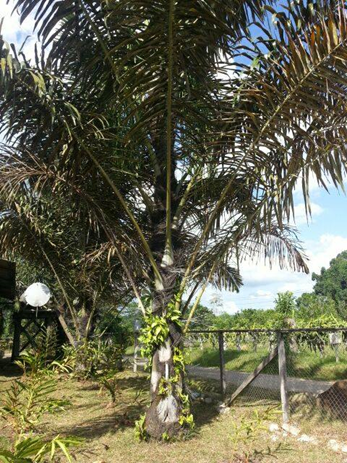
Figure 1: Sugar palm plantation planted by Kebun Rimau Sdn.Bhd.
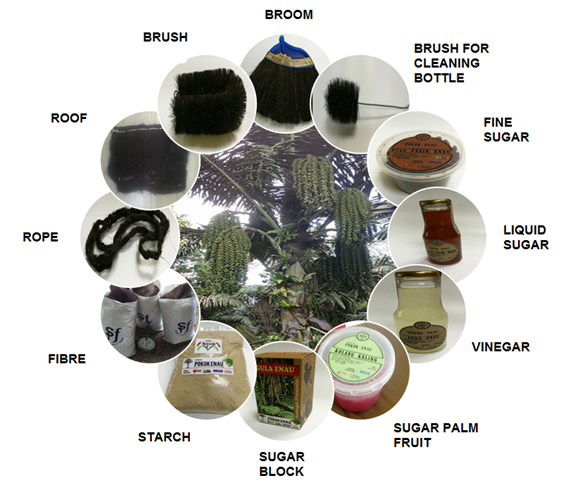
Figure 2: Twelve products produced from sugar palm tree
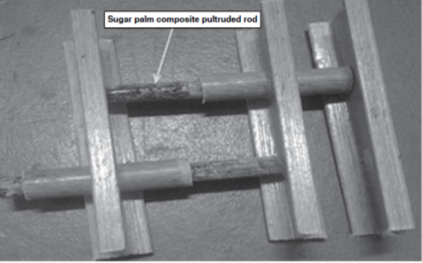
Figure 3: Pultruded sugar palm composite rod used in drain cover
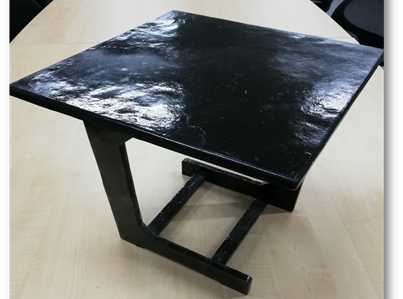
Figure 4: Multipurpose Table
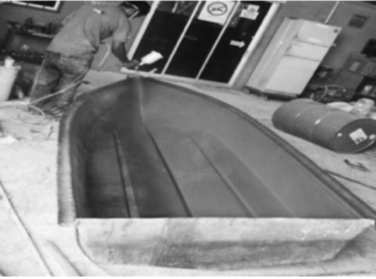
Figure 5: A boat shaped mold for the hand layup of sugar palm composite

Figure 6: Sugar palm-glass fiber reinforced composite automobile anti-roll bar
Conclusion
Sugar palm (Arenga pinnata) is a multipurpose tree with several traditional uses for making numerous local products. Due to their outstanding mechanical properties, sugar palm fibers can compete with most natural fibers in the market such as jute, cotton, kenaf, coir, oil palm fiber and many more fibers. In general, the utilization of sugar palm fiber and starch in composites can help in: (1) developing sugar palm as new industrial crop in the future; (2) decreasing the pressure for the dependence on petroleum products and (1) reducing the negative environmental impact of synthetic polymers and fibers. Consequently, this can lead to better socio-economic empowerment of the rural people by increasing revenues and creating more job opportunities.
Reference
[1] M. R. Ishak, S. M. Sapuan, Z. Leman, M. Z. A. A. Rahman, U. M. K. K. Anwar, and J. P. Siregar, “Sugar palm (Arenga pinnata): Its fibres, polymers and composites,” Carbohydr. Polym., vol. 91, no. 2, pp. 699–710, 2013, doi: 10.1016/j.carbpol.2012.07.073.
[2] R. A. Ilyas, S. M. Sapuan, and M. R. Ishak, “Isolation and characterization of nanocrystalline cellulose from sugar palm fibres (Arenga Pinnata),” Carbohydr. Polym., vol. 181, pp. 1038–1051, Feb. 2018, doi: 10.1016/j.carbpol.2017.11.045.
[3] N. H. Othman, A. R., & Haron, “Potensi industri kecil tanaman enau,” FRIM Rep., vol. 60, pp. 7–18, 1992.
[4] S. M. Sapuan et al., “Development of Sugar Palm–Based Products: A Community Project,” in Sugar Palm Biofibers, Biopolymers, and Biocomposites, 1st ed., First edition. | Boca Raton, FL : CRC Press/Taylor & Francis Group, 2018.: CRC Press, 2018, pp. 245–266.
[5] M. L. Sanyang, S. M. Sapuan, M. Jawaid, M. R. Ishak, and J. Sahari, “Recent developments in sugar palm (Arenga pinnata) based biocomposites and their potential industrial applications: A review,” Renew. Sustain. Energy Rev., vol. 54, pp. 533–549, 2016, doi: 10.1016/j.rser.2015.10.037.
[6] E. Martini et al., “Sugar palm (Arenga pinnata (Wurmb) Merr.) for livelihoods and biodiversity conservation in the orangutan habitat of Batang Toru, North Sumatra, Indonesia: Mixed prospects for domestication,” Agrofor. Syst., vol. 86, no. 3, pp. 401–417, 2012, doi: 10.1007/s10457-011-9441-0.
[7] J. Mogea, B. Seibert, and W. Smits, “Multipurpose palms: the sugar palm (Arenga pinnata (Wurmb) Merr.),” Agrofor. Syst., vol. 13, no. 2, pp. 111–129, 1991, doi: 10.1007/BF00140236.
[8] S. M. Sapuan et al., Pokok Enau: Potensi dan pembangunan produk, 1st Editio. Serdang, Selangor: Penerbit Universiti Putra Malaysia, 2017.
[9] I. Mukhtar, Z. Leman, E. S. Zainudin, and M. R. Ishak, “file:///C:/Users/faishal/Desktop/PH.D. WORK/helping papers for PLA SPF TREATMENT/EffectofWaterAbsorptiononMechanicalPropertiesofSugarPalmFibreReinforcedSugarPalmStarchspfspsBiocomposites.pdf treatments,” Int. J. Polym. Sci., vol. 2019, 2019, doi: 10.1155/2019/1230592.
[10] M. L. Sanyang, S. M. Sapuan, M. Jawaid, M. R. Ishak, and J. Sahari, “Effect of sugar palm-derived cellulose reinforcement on the mechanical and water barrier properties of sugar palm starch biocomposite films,” BioResources, vol. 11, no. 2, pp. 4134–4145, 2016, doi: 10.15376/biores.11.2.4134-4145.
[11] R. A. Ilyas, S. M. Sapuan, M. R. Ishak, and E. S. Zainudin, “Effect of delignification on the physical, thermal, chemical, and structural properties of sugar palm fibre,” BioResources, vol. 12, no. 4, pp. 8734–8754, 2017, doi: 10.15376/biores.12.4.8734-8754.
[12] R. A. Ilyas, S. M. Sapuan, M. R. Ishak, E. S. Zainudin, and M. S. N. Atikah, “Characterization of Sugar Palm Nanocellulose and Its Potential for Reinforcement with a Starch-Based Composite,” in Sugar Palm Biofibers, Biopolymers, and Biocomposites, First edition. | Boca Raton, FL : CRC Press/Taylor & Francis Group, 2018.: CRC Press, 2018, pp. 189–220.
[13] R. A. Ilyas et al., “Production, Processes and Modification of Nanocrystalline Cellulose from Agro-Waste: A Review,” in Nanocrystalline Materials, IntechOpen, 2019, pp. 3–32.
[14] R. A. Ilyas, S. M. Sapuan, M. R. Ishak, and E. S. Zainudin, “Sugar palm nanofibrillated cellulose (Arenga pinnata (Wurmb.) Merr): Effect of cycles on their yield, physic-chemical, morphological and thermal behavior,” Int. J. Biol. Macromol., vol. 123, pp. 379–388, Feb. 2019, doi: 10.1016/j.ijbiomac.2018.11.124.
[15] R. A. Ilyas, S. M. Sapuan, M. L. Sanyang, M. R. Ishak, and E. S. Zainudin, “Nanocrystalline cellulose as reinforcement for polymeric matrix nanocomposites and its potential applications: A Review,” Curr. Anal. Chem., vol. 14, no. 3, pp. 203–225, May 2018, doi: 10.2174/1573411013666171003155624.
[16] R. A. Ilyas et al., “Sugar palm (Arenga pinnata (Wurmb.) Merr) cellulosic fibre hierarchy: a comprehensive approach from macro to nano scale,” J. Mater. Res. Technol., vol. 8, no. 3, pp. 2753–2766, May 2019, doi: 10.1016/j.jmrt.2019.04.011.
[17] N. M. Nurazzi, A. Khalina, S. M. Sapuan, and R. A. Ilyas, “Mechanical properties of sugar palm yarn / woven glass fiber reinforced unsaturated polyester composites : effect of fiber loadings and alkaline treatment,” Polimery, vol. 64, no. 10, pp. 12–22, 2019, doi: 10.14314/polimery.2019.10.3.
[18] M. N. Norizan, K. Abdan, R. A. Ilyas, and S. P. Biofibers, “Effect of fiber orientation and fiber loading on the mechanical and thermal properties of sugar palm yarn fiber reinforced unsaturated polyester resin composites,” Polimery, vol. 65, no. 2, pp. 34–43, 2020, doi: 10.14314/polimery.2020.2.5.
[19] R. Jumaidin, S. M. Sapuan, M. Jawaid, M. R. Ishak, and J. Sahari, “Thermal, mechanical, and physical properties of seaweed/sugar palm fibre reinforced thermoplastic sugar palm Starch/Agar hybrid composites,” Int. J. Biol. Macromol., vol. 97, pp. 606–615, Apr. 2017, doi: 10.1016/j.ijbiomac.2017.01.079.
[20] R. Jumaidin, S. M. Sapuan, M. Jawaid, M. R. Ishak, and J. Sahari, “Effect of seaweed on mechanical, thermal, and biodegradation properties of thermoplastic sugar palm starch/agar composites,” Int. J. Biol. Macromol., vol. 99, pp. 265–273, 2017, doi: 10.1016/j.ijbiomac.2017.02.092.
[21] N. M. Nurazzi, A. Khalina, S. M. Sapuan, R. A. Ilyas, S. A. Rafiqah, and Z. M. Hanafee, “Thermal properties of treated sugar palm yarn/glass fiber reinforced unsaturated polyester hybrid composites,” J. Mater. Res. Technol., no. December, Dec. 2019, doi: 10.1016/j.jmrt.2019.11.086.
[22] M. D. Hazrol, S. M. Sapuan, R. A. Ilyas, M. L. Othman, and S. F. K. Sherwani, “Electrical properties of sugar palm nanocrystalline cellulose reinforced sugar palm starch nanocomposites,” Polimery, vol. 65, no. 05, pp. 363–370, May 2020, doi: 10.14314/polimery.2020.5.4.
[23] R. A. Ilyas et al., “Thermal, Biodegradability and Water Barrier Properties of Bio-Nanocomposites Based on Plasticised Sugar Palm Starch and Nanofibrillated Celluloses from Sugar Palm Fibres,” J. Biobased Mater. Bioenergy, vol. 14, no. 2, pp. 234–248, Apr. 2020, doi: 10.1166/jbmb.2020.1951.
[24] R. A. Ilyas, S. M. Sapuan, M. R. Ishak, and E. S. Zainudin, “Water transport properties of bio-nanocomposites reinforced by sugar palm (Arenga Pinnata) nanofibrillated cellulose,” J. Adv. Res. Fluid Mech. Therm. Sci. J., vol. 51, no. 2, pp. 234–246, 2018.
[25] R. A. Ilyas, S. M. Sapuan, M. R. Ishak, and E. S. Zainudin, “Development and characterization of sugar palm nanocrystalline cellulose reinforced sugar palm starch bionanocomposites,” Carbohydr. Polym., vol. 202, pp. 186–202, Dec. 2018, doi: 10.1016/j.carbpol.2018.09.002.
[26] M. S. N. Atikah et al., “Degradation and physical properties of sugar palm starch / sugar palm nanofibrillated cellulose bionanocomposite,” Polimery, vol. 64, no. 10, pp. 27–36, 2019, doi: 10.14314/polimery.2019.10.5.
[27] R. A. Ilyas et al., “Effect of sugar palm nanofibrillated cellulose concentrations on morphological, mechanical and physical properties of biodegradable films based on agro-waste sugar palm (Arenga pinnata (Wurmb.) Merr) starch,” J. Mater. Res. Technol., vol. 8, no. 5, pp. 4819–4830, Sep. 2019, doi: 10.1016/j.jmrt.2019.08.028.
[28] R. A. Ilyas et al., “Sugar palm ( Arenga pinnata [ Wurmb .] Merr ) starch films containing sugar palm nanofibrillated cellulose as reinforcement: Water barrier properties,” Polym. Compos., pp. 1–9, Sep. 2019, doi: 10.1002/pc.25379.
[29] M. L. Sanyang, S. M. Sapuan, M. Jawaid, M. R. Ishak, and J. Sahari, “Recent developments in sugar palm ( Arenga pinnata ) based biocomposites and their potential industrial applications: A review,” Renew. Sustain. Energy Rev., vol. 54, pp. 533–549, Feb. 2016, doi: 10.1016/j.rser.2015.10.037.
[30] A. Edhirej, S. M. Sapuan, M. Jawaid, and N. I. Zahari, “Cassava/sugar palm fiber reinforced cassava starch hybrid composites: Physical, thermal and structural properties,” Int. J. Biol. Macromol., vol. 101, pp. 75–83, 2017, doi: 10.1016/j.ijbiomac.2017.03.045.
[31] A. S. Wahyuni and Elhusna, “The Tensile Behaviour of Concrete with Natural Fiber from Sugar Palm Tree,” Int. Conf. Eng. Sci. Res. Dev., pp. 15–18, 2016.
[32] A. E. Prabowo, K. Diharjo, Ubaidillah, and I. Prasetiyo, “Sound absorption performance of sugar palm trunk fibers,” E3S Web Conf., vol. 130, pp. 1–9, 2019, doi: 10.1051/e3sconf/201913001003.
[33] M. K. B. M. Imran, “Sound insulation and vibration reduction of modified zinc roof using natural fiber (Arenga Pinnata),” Universiti Tun Hussein Onn Malaysia, 2015.
[34] D. Bachtiar, M. S. Salit, E. Zainudin, K. Abdan, and K. Z. H. M. Dahlan, “Effects of alkaline treatment and a compatibilizing agent on tensile properties of sugar palm fibrereinforced high impact polystyrene composites,” BioResources, vol. 6, no. 4, pp. 4815–4823, 2011.
[35] M. L. Sanyang, Y. Muniandy, S. M. Sapuan, and J. Sahari, “Tea tree (Melaleuca alternifolia) fiber as novel reinforcement material for sugar palm biopolymer based composite films,” BioResources, vol. 12, no. 2, pp. 3751–3765, 2017, doi: 10.15376/biores.12.2.3751-3765.
[36] A. Atiqah, M. Jawaid, S. M. Sapuan, and M. R. Ishak, “Dynamic mechanical properties of sugar palm/glass fiber reinforced thermoplastic polyurethane hybrid composites,” Polym. Compos., vol. 40, no. 4, pp. 1329–1334, 2019, doi: 10.1002/pc.24860.
[37] T. Ferdiansyah and H. A. Razak, “Mechanical properties of black sugar palm fiber-reinforced concrete,” J. Reinf. Plast. Compos., vol. 30, no. 11, pp. 994–1004, 2011, doi: 10.1177/0731684411411335.
[38] S. Misri, Z. Leman, S. M. Sapuan, and M. R. Ishak, “Mechanical properties and fabrication of small boat using woven glass/sugar palm fibres reinforced unsaturated polyester hybrid composite,” IOP Conf. Ser. Mater. Sci. Eng., vol. 11, p. 012015, 2010, doi: 10.1088/1757-899x/11/1/012015.
Date of Input: 29/05/2020 | Updated: 29/05/2020 | m_hambali
MEDIA SHARING



















.png)

.png)













